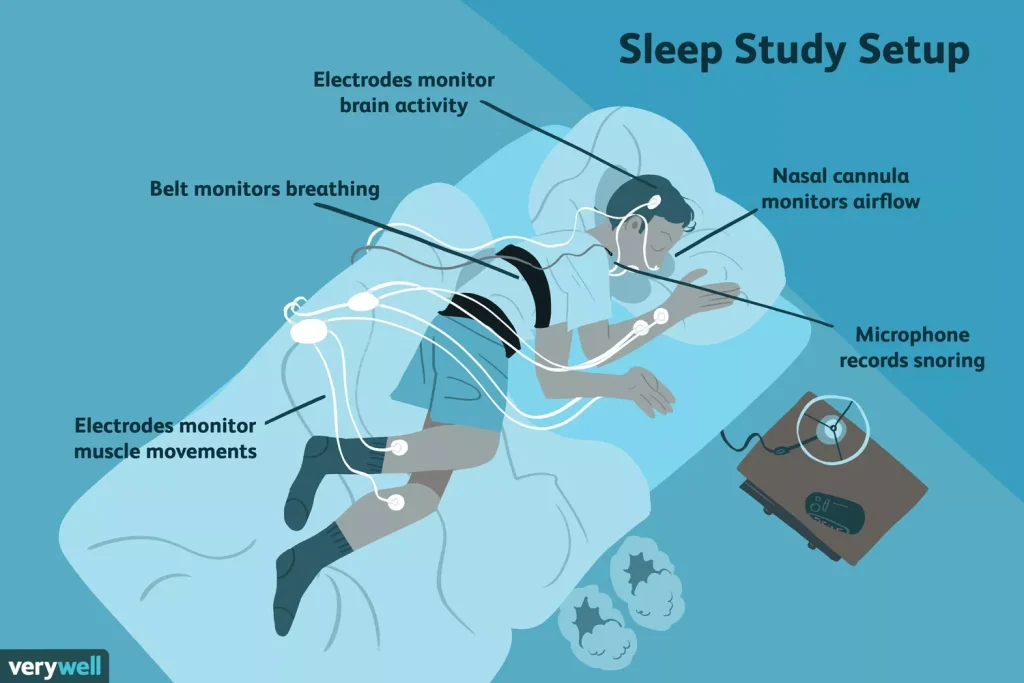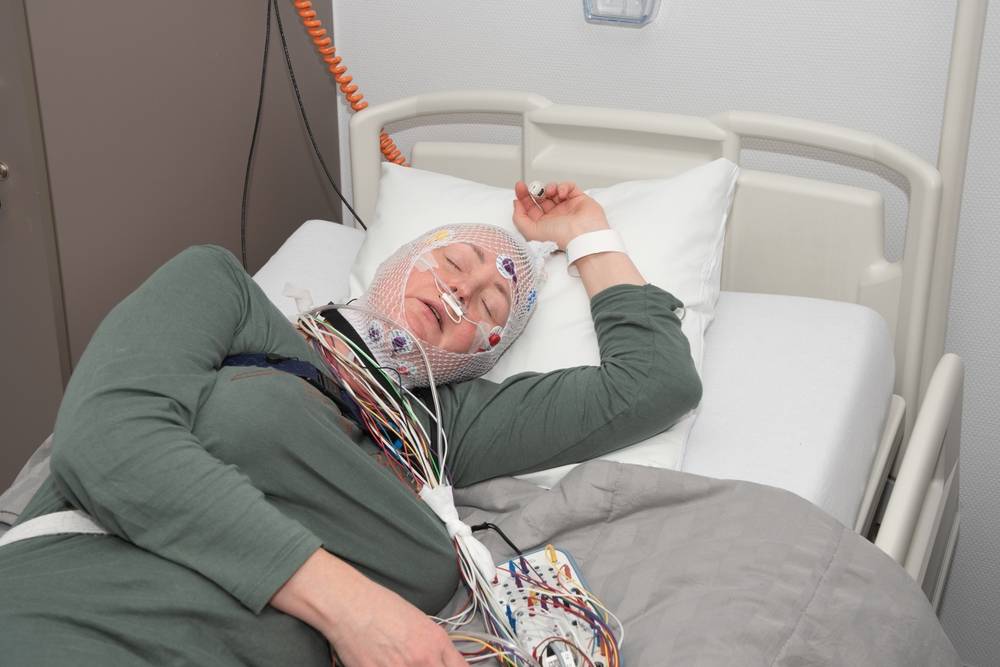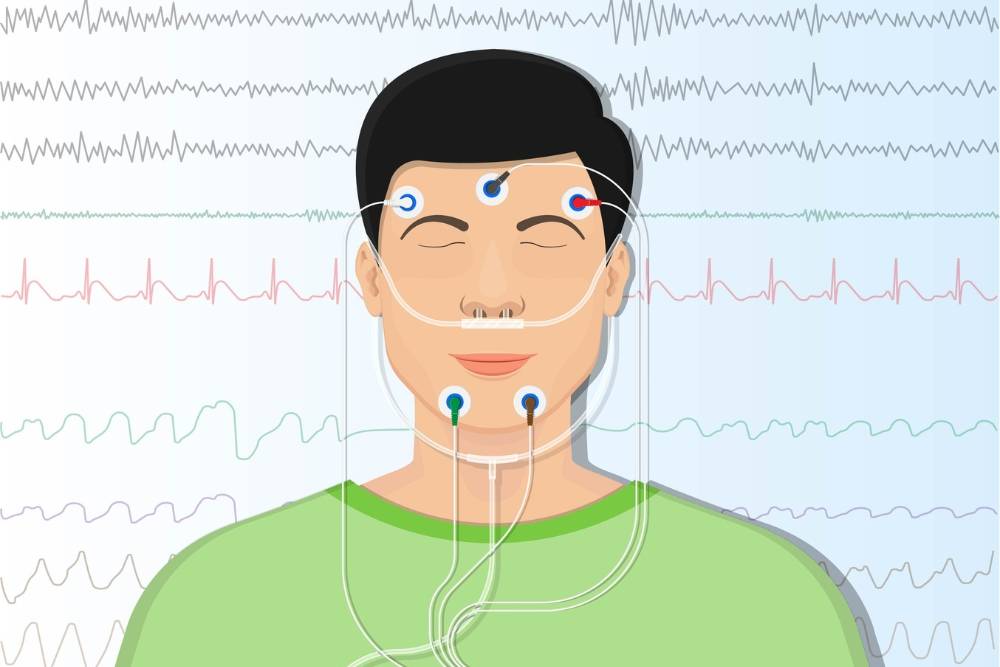Have you ever wondered what exactly happens to your body during sleep? Sleep isn’t just counting sheep; it is a complex symphony of brainwaves, muscle tension and breathing patterns. A polysomnography, or sleep study, is a test used in sleep medicine that can reveal the details of your night’s rest, and allow your doctor to troubleshoot any issues. It could be worth asking your doctor about a sleep study if you are having trouble sleeping.
Read also: Why am I Tired Even After Sleeping the Whole Night?
What Is a Sleep Study?
Sleep plays a critical role in the processes of memory consolidation and tissue repair, making it essential for overall health and cognitive function. During sleep, particularly in the stages of deep sleep and REM (Rapid Eye Movement) sleep, the brain is highly active in organizing and stabilizing memories acquired throughout the day.
A sleep study is a comprehensive test used to diagnose various sleep disorders. During the study, It records various body parameters while you sleep, such as brain activity, oxygen levels, heart rate, breathing, and eye and leg movements. With this data, your doctor can determine any sleep problems you may be experiencing and design an appropriate treatment.
What tools do sleep studies use?
A sleep study involves multiple measurements, including:
- EEG (Electroencephalogram): Measures the brain’s electrical activity and helps determine the phase of sleep.
- EOG (Electrooculogram): Records eye movements, which is important in identifying the REM (Rapid Eye Movement) phase.
- EMG (Electromyogram): Measures muscle activity, especially in the jaw and leg areas.
- Oxygen Saturation: Monitors oxygen levels in the blood to detect sleep apnoea.
- Breathing Pattern: Records breathing rate and depth, and detects breathing disorders.

Why Do I Need A Sleep Study?
Your doctor may have ordered a this study due to concerns about your sleep and health. A sleep study can obtain information that can help your doctor evaluate conditions and plan your care. These conditions include:
- Sleep apnoea – When breathing stops or decreases repeatedly during sleep. A sleep study can capture data on breathing and sleep quality.
- Insomnia – Trouble falling or staying asleep. A sleep study can rule out other underlying causes of insomnia.
- Narcolepsy – Excessive daytime sleepiness and episodes of falling asleep without warning. Sleep studies will be able to evaluate one’s sleep patterns.
- Restless legs syndrome (RLS) – Uncomfortable leg sensations that disrupt sleep. A sleep study will include sensors that monitor leg movements during sleep cycles.
- Circadian rhythm disorders – When the body’s natural sleep-wake cycle is disrupted. A multi-night in-lab sleep study may be used to maintain strict bedtimes and wake windows. This allows observation of any discrepancies to the circadian cycle length.
The Sleep Study Process

Undergoing a sleep study procedure may seem daunting if you’ve never experienced one before. Here are some steps to help ease any nerves:
Pre-Test Preparation
- Avoid caffeine, nicotine and alcohol the day before the test to ensure better sleep quality.
- Avoid using excessive hair products or lotions, as they may interfere with the device.
- Make sure to arrive ahead of your scheduled appointment time to check-in and fill out paperwork. The administrative staff or nurse will advise on the specific reporting time.
At the Test
- Technicians will place you in a private room or lab specially designed for the sleep study test.
- They will attach sensors and electrodes to your body to monitor various functions.
- A video camera may be set up by the bed to monitor you as you sleep.
- You will be asked to lie down on a comfortable bed and try to fall asleep as you normally would at home.
- Get into bed and try to fall asleep as you normally would. Technicians will monitor you from another room and only enter if needed.
- If you need anything during the night, such as the bathroom, you can call out and they will assist.
- The study usually lasts 6-8 hours, allowing time to pass through sleep cycles
- Remain in bed until the morning when sensors will be removed
After the Test
- Remain in bed until the morning when sensors and monitors will be removed.
- The data will then be analysed by a sleep physician, and discussed with you in the following visit.
What Happens After the Sleep Study?
The results of the test are not immediately available. Sleep physicians will carefully evaluate all the data to determine they are affecting your sleep. Schedule a follow up appointment with your clinic, typically about two weeks after the study.
The doctor will discuss the results of the study with you at your return visit, diagnose issues and develop a treatment plan to improve your sleep and daytime functioning.
Ready For A Good Night’s Sleep?
While the prospect of spending a night hooked up to monitors may seem daunting, most patients find that a sleep study provides valuable insights into any issues impacting their rest.
First, comprehensive monitoring of different body functions collects a wealth of data from your sleep. Then, sleep physicians then thoroughly analyse the data after the study to identify any abnormalities in sleep stages, respiratory issues, limb movements and more. At the follow-up appointment two weeks later, your doctor will discuss results of the diagnostic testing, deliver a diagnosis if applicable, and work with you to establish a care plan to suit your condition.
A diagnostic sleep study may just be the thing to offer information and solutions to your sleeping woes. Happy sleeping!

